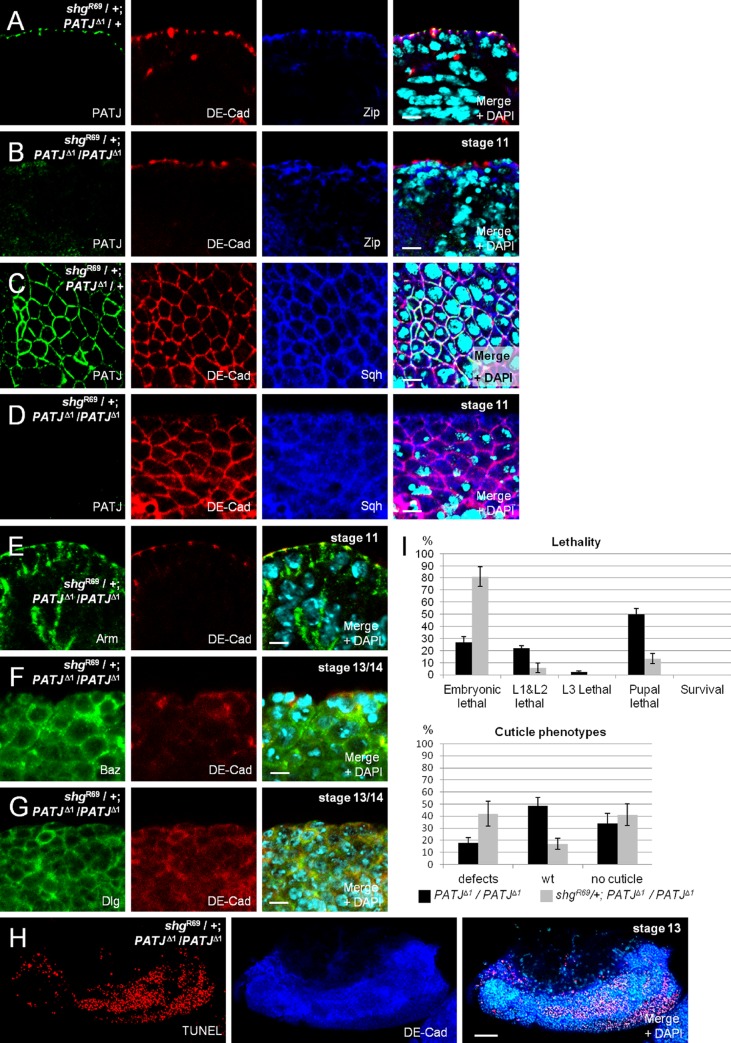Figure 3.
PATJ supports weak AJ. (A and C) Myosin heavy (Zip) and light (Sqh) chain accumulate at the apical junctional region in the embryonic epidermis, even in embryos expressing reduced levels of PATJ and DE-Cad (embryos heterozygous for PATJΔ1 and shgR69). (B, D, and E) Myosin is lost from AJ in embryos homozygous for PATJΔ1 and heterozygous for shgR69, although DE-Cad (B and D) as well as Arm (E) still accumulate at the Zonula Adherens. (F and G) In later stages of embryos homozygous for PATJΔ1 and heterozygous for shgR69, DE-Cad and Baz mislocalize in cytosolic vesicles or in aggregates. Note that the epidermis appears multilayered, and many cells start to round up, resulting in an unpolarized distribution of the lateral marker Dlg. (H) In the epidermis of these embryos, many cells undergo apoptosis, marked here by TUNEL labeling. (I) A reduction of DE-Cad protein level by introducing one mutant allele results in an increase of lethality and cuticle phenotypes in PATJΔ1 mutant embryos. Lethality data were averaged from three different experiments with 100 embryos each. Cuticles were scored from three independent experiments with total embryos of 174 (PATJΔ1/PATJΔ1) and 272 (shgR69/+; PATJΔ1/PATJΔ1). wt, wild type. Error bars show SDs. Bars: (A–G) 5 µm; (H) 200.

